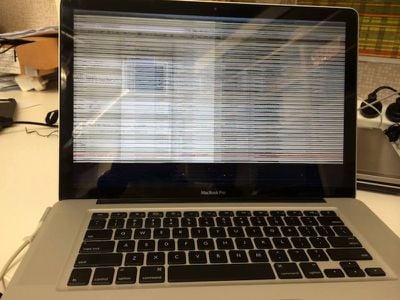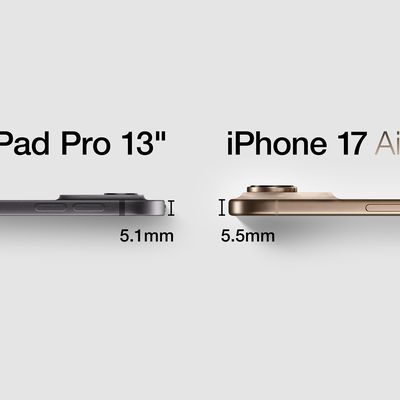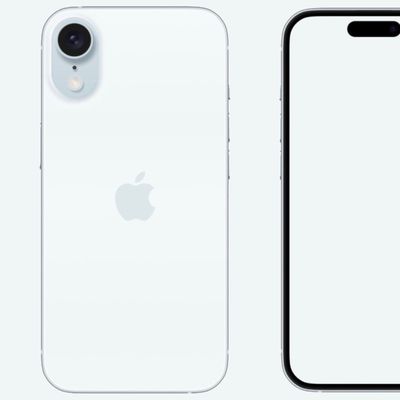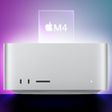Class Action Lawsuit Filed Against Apple Over 2011 MacBook Pro Graphics Issues
Back in January, we highlighted graphics issues being experienced by a number of owners of 2011 15-inch and 17-inch MacBook Pro models, with many users needing to pay for (sometimes multiple) expensive logic board replacements due to the issue. The apparent widespread nature of the issue has led to claims that it is a manufacturing defect that should be covered by Apple, with a change.org petition seeking relief from Apple now exceeding 20,000 signatures and affected users organizing in a Facebook group of over 5,000 members.

We noted in August that law firm Whitfield Bryson & Mason LLP had begun researching the issue, soliciting feedback from affected users to determine whether a class action lawsuit against Apple might be warranted. The firm apparently found sufficient reason to proceed as it has announced today that it has indeed filed suit against Apple on behalf of affected consumers.
Our firm recently filed a class-action lawsuit in a California federal court against Apple, Inc. on behalf of residents in the States of California and Florida who purchased 2011 MacBook Pro Laptops with AMD GPUs who experienced graphical distortions and system failures.
The firm is continuing to solicit feedback from affected users and is considering filing actions in other jurisdictions around the country.
The lawsuit lays out the plaintiffs' argument that the issues stem from hardware defects related to the lead-free solder used on the AMD graphics chips in the 2011 MacBook Pro models.
When the lead-free solder cracks it degrades the data flow between the GPU and the logic board. A small crack can cause the laptop’s graphics to become distorted on occasion. But as cracks in the lead-free solder propagate over time, the graphics issues worsen and system stability decreases, until eventually the computer is completely unusable. This defect related to the lead-free solder connecting the GPU to the logic board (the “Graphics Defect”) limits all computers at the point of sale forward from performing as advertised and warranted.
The suit goes on to note that Apple's only solution offered for the issue is complete logic board replacement, but that the remedy is ineffective as replacement parts use the same solder and fail in the same way, sometimes within days. Apple has also in many cases charged consumers for the repairs and has refused requests to reimburse consumers for repairs paid for out of pocket.
Drawing parallels to similar graphics issues in the 2008 MacBook Pro that ultimately resulted in a recall by Apple, the plaintiffs in this case request that Apple acknowledge a defect in the 2011 MacBook Pro models, notify owners of the issue, bear the costs of inspection of affected machines, and pay the full costs of repairs and damages. The suit also requests that users who have paid out of pocket for repairs be reimbursed for their expenses.
Popular Stories
iOS 19 is still around six months away from being announced, but a new leak has allegedly revealed a completely redesigned Camera app.
Based on footage it obtained, YouTube channel Front Page Tech shared a video showing what the new Camera app will apparently look like, with the key change being translucent menus for camera controls. Overall, the design of these menus looks similar to...
Apple on late Saturday removed TikTok from the App Store in the U.S., and it has now explained why it was required to take this action.
Last year, the U.S. passed a law that required Chinese company ByteDance to divest its ownership of TikTok due to potential national security risks, or else the platform would be banned. That law went into effect today, and companies like Apple and Google...
Apple today adjusted estimated trade-in values for select iPhone, iPad, Mac, and Apple Watch models in the U.S., according to its website.
Some values increased, while others decreased. The changes were not too significant, with most values rising or dropping by $5 to $50.
We have outlined some examples below:
Device
New Value
Old Value
iPhone 15 Pro Max
Up to $630
U ...
Apple provided the third beta of iOS 18.3 to developers today, and while the betas have so far been light on new features, the third beta makes some major changes to Notification Summaries and also tweaks a few other features.
Notification Summary Changes
Apple made multiple changes to Notification Summaries in response to complaints about inaccurate summaries of news headlines.
For...
iOS 19 will not drop support for any iPhone models, according to French website iPhoneSoft.fr.
The report cited a source who said iOS 19 will be compatible with any iPhone that can run iOS 18, which would mean the following models:
iPhone 16
iPhone 16 Plus
iPhone 16 Pro
iPhone 16 Pro Max
iPhone 15
iPhone 15 Plus
iPhone 15 Pro
iPhone 15 Pro Max
iPhone 14
iPhon...
After a four-year wait, a new AirTag is finally expected to launch in 2025. Below, we recap rumored upgrades for the accessory.
A few months ago, Bloomberg's Mark Gurman said Apple was aiming to release the AirTag 2 around the middle of 2025. While he did not offer a more specific timeframe, that means the AirTag 2 could be announced by the end of June.
The original AirTag was announced...
For the last several months, we've been hearing rumors about a redesigned version of the iPhone 17 that Apple might call the iPhone 17 "Air," or something along those lines. It's going to replace the iPhone 17 Plus as Apple's fourth iPhone option, and it will be offered alongside the iPhone 17, iPhone 17 Pro, and iPhone 17 Pro Max.
We know the iPhone 17 Air is going to be super slim, but...
A new iPhone SE is widely rumored to launch this year, and the device has potentially been confirmed today by known leaker Evan Blass.
In a private social media post, Blass shared an image of what appears to be source code mentioning an iPhone SE (4th Gen), which casts doubt on the alternative "iPhone 16E" name rumored for the device. However, the name in the source code could be a...























